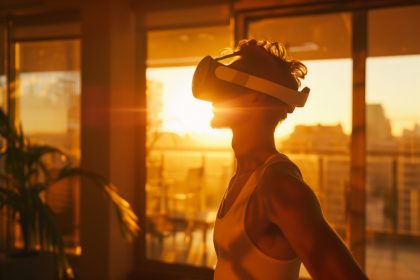For most of history, the home was primarily a place of shelter and rest. Over the last two decades, however, we have witnessed an extraordinary transformation—one where technology, connectivity, and design have merged into seamless experiences. The new generation of home gadgets isn’t just about novelty or convenience anymore; it’s about genuine enhancement of everyday life. The modern homeowner seeks efficiency without friction, comfort that learns and adapts, and systems that work quietly in the background to manage the routine so humans can focus on the meaningful.
Smart kitchens are an excellent starting point for understanding this change. Imagine a refrigerator that monitors your groceries, notifies you when you’re low on essentials, and even suggests recipes based on what’s inside. Connected ovens and cooktops can be controlled through voice commands or apps, ensuring precise cooking while reducing energy consumption. Smart coffee makers now sync with wearable sleep trackers to brew at the exact moment you wake up, reinforcing a sense of personalized rhythm and comfort. Together, these tools don’t just save time—they create a more responsive culinary environment.
Climate control has evolved far beyond the traditional thermostat. Adaptive systems now track occupancy, weather forecasts, and even schedule patterns to automatically maintain optimal comfort while minimizing energy waste. They learn from your temperature preferences, adjust settings when you leave home, and optimize airflow room by room. The result is not only convenience but measurable sustainability. Homes are becoming living systems that maintain themselves, adjusting to external and internal changes effortlessly.
Meanwhile, robotic assistance has matured from novelty vacuums to highly capable multitasking systems. Cleaning robots can now map rooms using LIDAR sensors, identify objects, adjust cleaning intensity for different floor types, and even empty their dustbins autonomously. Newer models can handle window cleaning or yard maintenance, eliminating repetitive chores in and around the home. This growing precision allows homeowners to maintain spotless spaces with minimal effort.
The realm of home security has also entered an era of intelligent automation. Modern devices combine AI-driven analytics with high-definition imagery and biometric verification. Instead of mere motion detection, cameras now distinguish between familiar faces, pets, and potential threats, minimizing false alarms while enhancing accuracy. Remote access through mobile applications gives homeowners peace of mind, while integration with lighting and door systems ensures proactive safety measures—like automatically illuminating the entrance when someone approaches after dark.
These technological leaps reflect a deeper shift in how we define domestic life. Modern homeowners increasingly value integration over isolated functions, seeking ecosystems where multiple devices communicate through platforms like Google Home, Amazon Alexa, or Apple HomeKit. This connectivity ensures that lighting adjusts when media is playing, blinds close when temperatures rise, and alarms activate automatically when all family members leave the house. Through intuitive design and sustainable engineering, the home becomes an active partner rather than a passive environment.
The modern home is no longer static; it’s an ecosystem infused with intelligence and empathy. Technological advancement has matured to focus not simply on faster or smarter devices, but on human-centered functionality—how each gadget contributes to health, serenity, sustainability, and a stronger emotional relationship between users and their spaces.
Self-learning appliances are central to this movement. From washing machines that sense load weight and fabric type to dishwashers adjusting cycles based on water hardness and soil detection, these machines optimize without manual input. They don’t just clean better—they think about how to clean most efficiently, saving resources while maintaining quality.
Adaptive lighting systems have become a cornerstone of modern interior design, blending ambiance with health optimization. Tunable LEDs can simulate natural daylight patterns, improving mood and regulating circadian rhythms. They respond automatically to time of day, task, or even emotional tone detected by wearables or cameras. When synchronized with voice assistants or motion sensors, lighting becomes invisible in its operation yet powerful in psychological effect—a clear example of technology working unobtrusively in service to human well-being.
Outdoors, automated garden tools redefine ease of landscape maintenance. Smart irrigation controllers use local weather data and soil sensors to water only when necessary, while robotic lawnmowers maintain perfect grass height without supervision. These innovations not only preserve time but significantly reduce water waste and emissions compared to traditional gardening methods.
Emerging in importance are smart water management systems, detecting leaks in real time and shutting off valves before costly damage occurs. In regions where conservation is a priority, such devices offer detailed analytics on household water usage, inspiring behavioral change through visible data insights.
Even furniture is growing intelligent. Ergonomic desks monitor sitting posture, encouraging movement or break intervals to prevent fatigue. Smart beds track heart rate and sleep quality, adjusting firmness or temperature dynamically. The result is a subtle fusion of comfort and biomedical awareness that empowers more conscious living habits.
Voice-responsive entertainment and AI-driven organization tools further enhance the sense of unified living. From sound systems that adjust volume based on room acoustics to storage solutions that remind users where items are placed, innovation increasingly addresses mental ease rather than physical automation alone. Convenience now extends to emotional simplicity—the assurance that everything simply works without constant oversight.
The overarching message in this evolution is one of purposeful technology. The best gadgets today do not merely fill homes with more devices; they create harmony between digital intelligence, environmental responsibility, and human comfort. They merge into the architecture rather than standing apart, shaping experiences that are intuitive, sustainable, and deeply personal.
As innovation continues to accelerate, the line between luxury and necessity blurs. Ease of living, once considered indulgent, now feels essential to balanced modern lifestyles. These technologies help individuals reclaim their most limited resource—time—and reinvest it into creativity, connection, and self-care.
In essence, the future home is not just smart; it is attuned. It learns, adapts, and evolves with its occupants. It fosters convenience without intrusion, sustainability without compromise, and intelligence without complexity—proving that true progress in home innovation lies in designing systems that are not only efficient but also empathetic. The home becomes more than walls and furniture—it becomes a living companion, enabling us to live better, not just faster.









